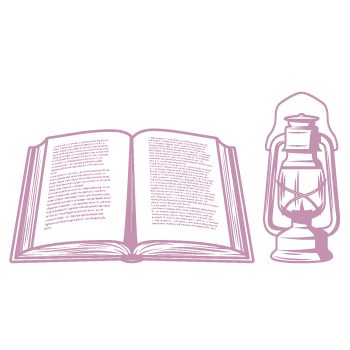
Who Translated the Bible into German?
Martin Luther
Martin Luther is known for his German work and translation of the Bible into German. He was born on November 10th, 1483, and was a German speaker, theologian, and professor of theology at the University of Wittenberg. In 1522 he completed the first translation of the New Testament into German, and his complete Bible translation followed in 1534. Justus Jonas, Philip Schaff, and Philipp Melanchthon were just some of the people who helped him complete his translation. This German translation of the Bible was essential for Luther because it allowed the German nation to access a piece of Christian history that had previously been exclusive to Latin speakers. With this translation, Luther spread the word of God to all German speakers, allowing them to understand the Bible in their native language.
In addition to translating the Bible into German, Luther also wrote commentaries on various books of the Bible and wrote hymns and other religious works. He is also credited with influencing the English language translation of the Bible, specifically the King James Version. Luther was very influential in his ideas on justification by faith, and his Bible translation helped solidify these beliefs in German culture. Today, Martin Luther is celebrated for his work in the German language, which helped to bring Christianity to all German speakers. His work has been praised for combining Latin’s exalted language with German’s base language, creating a new version of the Bible that could be read and understood by a larger audience. His translation committee has become essential to Christian history and German literature, as many modern translations are based on Luther’s original German version.
Continued Influence in the 19th Century
Despite being completed in the 16th century, Martin Luther’s German Bible translation continued to exert influence well into the 19th century. The translation remained a foundational text for Lutheran churches and German-speaking Christians, shaping their theological beliefs and religious practices. Moreover, the dissemination of Luther’s Bible translation facilitated the spread of literacy and education among the populace, contributing to social and cultural developments in Western Europe.
In the 19th century, publishers such as Yale University Press capitalized on this enduring influence by producing annotated editions and scholarly commentaries on Luther’s translation, further cementing its legacy in the annals of religious history.
Impact on Publishing
The translation of the Bible into German by Martin Luther and other reformers had a profound impact on the publishing industry in Western Europe. Prior to Luther’s translation, Latin translations were dominant, limiting access to the scriptures for the common people. However, Luther’s German Bible opened the doors to vernacular translations, leading to a surge in demand for printed copies.
Publishers such as Oxford University Press, Cambridge University Press, Penguin Books, and Abingdon Press seized the opportunity to meet this demand, producing and distributing copies of the Bible in various languages. This proliferation of printed Bibles contributed to the spread of Protestantism and the democratization of religious knowledge throughout Western Europe.
Legacy in Art and Architecture
The impact of Martin Luther’s German Bible translation extended beyond the realm of theology and literature, influencing art and architecture throughout Western Europe. Artists such as Lucas Cranach, known for his close association with Luther, depicted scenes from the Bible in their paintings and woodcuts, bringing the scriptures to life for the masses. Moreover, Luther’s translation inspired the construction of churches and religious buildings, such as the Castle Church in Wittenberg, where Luther famously posted his Ninety-five Theses. The architectural landscape of Western Europe bears witness to the enduring legacy of Luther’s translation, serving as a tangible reminder of the transformative power of the written word.


Ulrich Zwingli
Ulrich Zwingli was a German person known for his work in translating the Bible into the German language. He is credited with introducing the Reformation in Switzerland, which led to the development of Protestantism as a major Christian denomination. Zwingli began working on his English translation of the Bible in 1523, which was completed in 1529. It was one of the first translations from Latin and Greek into a foreign language. The work was considered revolutionary then and widely accepted throughout Europe. This became the basis for later English translations, such as those of William Tyndale and Myles Coverdale. The impact of Ulrich Zwingli’s English translation of the Bible was significant in that it helped spread Protestantism and paved the way for subsequent translations of the Bible into German. His work also served as an example of how religious texts can be translated into other languages, making them accessible to a broader audience.
Get more information about Bible translation and technology.
Legacy in Art and Architecture
The impact of Martin Luther’s German Bible translation extended beyond the realm of theology and literature, influencing art and architecture throughout Western Europe. Artists such as Lucas Cranach, known for his close association with Luther, depicted scenes from the Bible in their paintings and woodcuts, bringing the scriptures to life for the masses.
Moreover, Luther’s translation inspired the construction of churches and religious buildings, such as the Castle Church in Wittenberg, where Luther famously posted his Ninety-five Theses. The architectural landscape of Western Europe bears witness to the enduring legacy of Luther’s translation, serving as a tangible reminder of the transformative power of the written word.
William Tyndale
William Tyndale (c. 1494–1536) was an English scholar who is widely credited with being the first person to translate the Bible into English from the original Greek and Hebrew sources. He was educated at Oxford University and began translating the New Testament in 1525. He was determined to make the Bible available to people in a language they could understand, and he was critical of the Catholic Church’s control over access to the Bible. Tyndale’s translation of the New Testament was first published in 1526 and became hugely popular, despite facing much persecution and censure. He was forced to flee England and went on to complete his translation of the Old Testament while in exile. His translation of the Bible remained influential until the time of the King James Version. Tyndale also wrote several books defending Protestantism and attacking Catholic doctrine. Catholic authorities captured him in 1535 and executed him for heresy in 1536. Though his life was short, his influence on the English language and Protestant Christianity is still felt today.


Myles Coverdale
Myles Coverdale is a crucial figure in the history of German Bible translations, as he was the first person to translate the entire Bible from Hebrew and Greek into English. Coverdale was born in Yorkshire, England, in 1488 and educated at Cambridge University. He became a monk in 1513 and devoted himself to his studies, eventually becoming an ordained priest in 1515. Coverdale’s translation of the Bible was published in 1535 and became known as the Coverdale Bible. It was the first complete Bible printed in England, and Coverdale had also made significant revisions to earlier translations by William Tyndale, John Rogers, and John Wycliffe. In 1534, Coverdale produced a revision of Tyndale’s New Testament; in 1535, he completed the translation of the Old Testament. In addition to his English translation of the Bible, Coverdale also produced a German version of the Bible, which was published in 1545. He used Luther’s German translation as a base, and this combined version was known as the Coverdale-Luther Bible. This was the first translation of the Bible into German that contained both the Old and New Testaments, making it an essential milestone in German Bible translation.
John Rogers
John Rogers was an English translator and clergyman who worked on translating the Bible into German. He is most noted for his 1537 publication of the Matthew Bible, a New Testament translation based on William Tyndale’s work. Rogers was born around 1505 in Deritend, Birmingham. He attended Magdalen College, Oxford, and was ordained as a priest in 1527. He then served as curate of All Hallows Church in London and eventually became chaplain to Thomas Cranmer, Archbishop of Canterbury. In 1534, Rogers and Tyndale translated a version of the New Testament from Greek into English, known as the Matthew Bible. This version was officially approved by King Henry VIII and received royal protection from censorship. It was published in 1537 and featured marginal notes written by Rogers. Rogers also translated some parts of the Old Testament from Hebrew into English, and the Coverdale Bible was published in 1535 with his translation of the book of Jonah included. In 1546, Rogers was one of the signatories of the Forty-Two Articles of Religion – a document created by Thomas Cranmer during the Reformation which helped to define the doctrines of the Church of England. John Rogers was arrested and burned at stake for his Protestant faith in 1555 under Queen Mary’s reign. His name has been remembered for centuries for his contributions to the English Bible, which still stand as evidence of his passion and commitment to spreading God’s Word.
John Wycliffe
John Wycliffe (1320-1384) was an English theologian, philosopher, biblical translator, and seminary professor who significantly impacted the Protestant Reformation. He is most famous for translating the Bible into English, completed in 1382. Wycliffe’s translation was the first to be based on the original Hebrew and Greek texts. Wycliffe also taught and wrote extensively about reform and believed that the Scriptures should be accessible to everyone. He was one of the earliest advocates of clerical reform and thought that the Church should be subject to the authority of Scripture. His teachings ultimately led to the development of what is known as the Lollard movement, a group of religious dissenters who rejected many of the Catholic Church’s teachings. Despite fierce opposition from Church leaders, Wycliffe’s teachings and writings had a lasting impact on England and Europe.
Evolving Bible Translations
The progression from the Ames Bible to the Luther Bible marked a significant evolution in the accessibility of sacred texts for the common people in the Protestant church. In the 14th century, the Ames Bible offered a version of the scripture that was closer to the original languages, providing a basis for future translations. By the time of Martin Luther, translations like the Luther Bible, with the collaboration of scholars such as Matthäus Aurogallus, took advantage of the knowledge gained from Greek editions and Greek versions of the New Testament. These translations transformed the religious landscape by allowing everyday people to engage directly with the texts in their own language, profoundly shaping their understanding of faith and daily life.
The James Bible revolutionized biblical translation in the 11th century, reaching nearby towns with its large-print Bibles that made scripture accessible to more people. Despite the immense trouble caused by previous translations, the James Bible brought a glorious melody to the text, enhancing its impact and resonance for readers across generations.
In the 9th century, vernacular translations of biblical texts began to emerge, setting the stage for a significant shift toward English versions and other European languages. Despite the prevalence of Latin translations, humanist scholars such as Philip Melanchthon sought accurate translations that resonated with the common language of the people. By the time of the 500th anniversary of Pope Leo X’s reign, these efforts had transformed what was once a monotonous song into vibrant scripture that deeply engaged the faithful.
Wartburg Castle Transformation
Wartburg Castle, located in central Germany, holds significant historical importance in the context of Bible translation. It was at this castle that Martin Luther, under the pseudonym “Junker Jörg,” sought refuge after his excommunication from the Catholic Church. During his time at Wartburg Castle, Luther worked tirelessly on his German translation of the Bible, utilizing Greek manuscripts and Latin translations to produce an accurate rendition accessible to the German-speaking populace.
This period of seclusion allowed Luther to focus on his translation work without the distractions and threats he faced elsewhere. The completion of his translation at Wartburg Castle marked a pivotal moment in the Protestant Reformation, as it provided Western Europe with a comprehensive Bible in the vernacular language.
Frederick III’s Patronage
Frederick III, also known as Frederick the Wise, played a crucial role in the development and dissemination of Martin Luther’s German Bible translation. As the Elector of Saxony, Frederick III provided crucial support and protection to Luther during his translation efforts. Recognizing the importance of Luther’s work, Frederick ensured that resources and scholars were made available to assist in the translation process.
Additionally, Frederick’s patronage extended to other reformers and scholars, fostering an environment conducive to intellectual and religious innovation. The collaboration between Luther and Frederick III laid the groundwork for the spread of Protestantism and the establishment of Lutheran churches throughout Western Europe.
Frequently Asked Questions
Who translated the first German Bible?
Martin Luther translated the first complete German Bible in the 16th century.
When was the first German Bible translation completed?
Luther’s translation of the New Testament was completed in 1522, and the Bible was finished in 1534.
What was the motivation behind translating the Bible into German?
Luther wanted to make the Bible more accessible to ordinary people who did not understand Latin, the language in which the Bible was primarily available.
Was Luther's translation of the Bible controversial?
Yes, Luther’s translation was controversial, as it challenged the authority of the Catholic Church and its interpretation of the Bible.
What were some of the challenges involved in translating the Bible into German?
Some challenges included finding the right words to express complex theological concepts, dealing with regional dialects, and maintaining accuracy while making the translation accessible to the masses.
